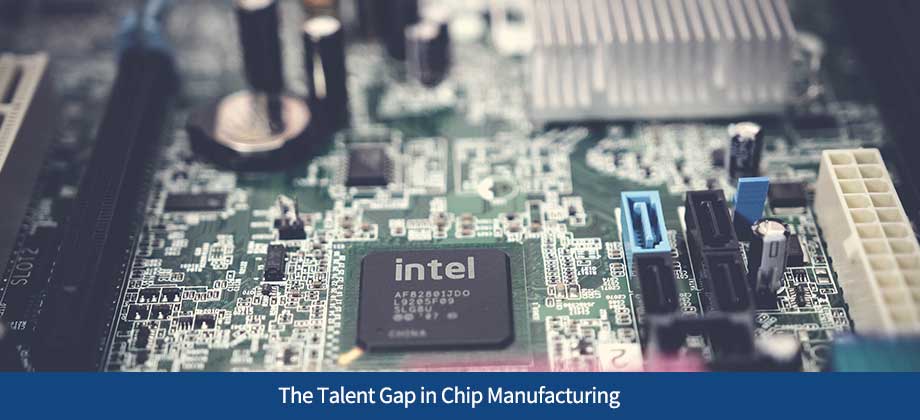The Talent Gap in Chip Manufacturing

The CHIPS and Science Act was signed into law by President Biden one year ago, in August of 2022. Its goal was to provide federal funding to build microprocessor manufacturing facilities in the United States. In turn, this would cut back on our reliance on chip supply chains abroad and give the U.S. science and technology sectors a needed boost. The act also includes subsidies for U.S.-based corporations to manufacture semiconductors, enhance science and technology research, and “address China’s anti-competitive trade practices,” according to the National Governor’s Association. On the mark of the CHIPS and Science Act’s one-year anniversary, we’re taking a deeper dive into one of the unforeseen roadblocks that U.S. chips manufacturers are facing: a lack of workers.
Since the CHIPS and Science Act was signed into law, companies across the United States have announced more than $166 billion to manufacture semiconductors (also known as chips) and electronics; “In total, since the beginning of the Biden-Harris Administration, companies have announced over $231 billion in commitments in semiconductor and electronics investments in the United States” according to a White House Fact Sheet. But what companies like the Taiwan Semiconductor Manufacturing Company—which is the largest contract chipmaker in the world—have found is that they need to halt production on the construction of these plants, simply because there are no skilled U.S. workers to employ.
It is important to note that a lot of the semiconductor supply chain is based in Taiwan and South Korea, so it’s not surprising that there’s a decided lack of qualified workers in America. But since the Semiconductor Industry Association predicts that the United States chip industry will grow by 115,000 jobs come 2030, with nearly 67,000 of them (or 58 percent of new jobs) at risk of going unfilled because of a lack of training programs and school funding. There is a bright side, however—and while it might not be fully realized in the immediate future, the CHIPS and Science Act created new programs for K-12 STEM education and strengthened existing National Science Foundation (NSF) programs, including Advanced Technological Education, the CyberCorps Scholarship for Service, and the Robert Noyce Teacher Scholarship program.
Handshake, a career services platform, published a study noting a 40.5 percent increase in internships posted by semiconductor companies over last school year. Applications for full-time jobs in the semiconductor space have increased 79 percent, while still more chip companies are now partnering with middle schools, high schools, and colleges in their area to secure a pipeline of talent.
While investments are being made in education, chip-sector hopefuls should note the financial benefits that come with a career in the semiconductor industry. According to Semiconductors.org, the average annual income of workers in this space sits at $170k.
At ARF Financial, we’re proud to have helped hundreds of manufacturing businesses across the country secure the funding they need for success. Our expert loan consultants are here to help business owners like you gain access to capital quickly and easily. So whether you need lower payments or maximum flexibility, we’ve got a revolving line of credit that’s perfect for your business.

